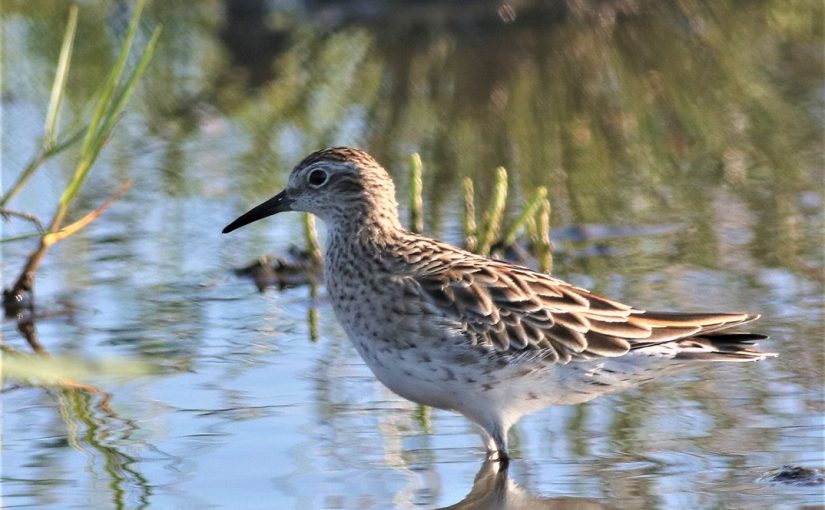Mozambique: Elephant stuck in mud for 2 days saved after 8-hour rescue
Mozambique: First-ever sightings of rare bird in Macaneta

Sharp-tailed Sandpiper. [Photo: Courtsey of Gary Allport / Bird Life]
Macaneta is set to become a regional birding hotspot as ornithologists and environmental experts have identified a significant number of rare bird species in the area. There has been a great deal of excitement when the first sightings of the Sharp-tailed Sandpiper was recorded – this a first on the African continent. Macaneta is also the most northerly location where the endangered Cape Cormorants have been seen.
Expert birder and Senior Adviser to the CEO of BirdLife International, Gary Allport said that the ongoing discovery of Macaneta’s diversity promises an incredible experience for uninitiated and expert birders. “There is a spectacular number of migrant wetland birds to be found along with the endemic birds of the diverse coastal forest. Macaneta offers a unique experience for bird watchers of all interests and abilities.”
A total of 291 bird species have been identified in the area and is second only to the number of bird species found in Gorongosa National Park. Experts say that Macaneta offers a unique biodiversity with many interesting habitats in a relatively small area. Its beach, mangroves, estuary, tidal marshes, dune forest and grasslands are known to respond in different ways throughout the year reacting to rainfall, the tides and the sun.
The summer months in Mozambique see a huge influx of migrating birds from the Northern Hemisphere and Macaneta forms part of their travel route as the area is visited by birds that migrate within Africa and from Madagascar. In addition to the Sharp-tailed Sandpiper, the White-rumped Sandpiper – a rare visitor to the African continent – has also been spotted for the first time in Macaneta.
These huge flocks of waterbirds in the flooded grasslands are internationally important, particularly for species of terns and cormorants. Visitors to the area can spot mega-rare birds in the tidal mud areas, some of which are listed in the BirdLife International and IUCN Global Redlist. The dune forests are also home to endemic bird residents such as Rudd’s Apalis and the Spotted Ground Thrush that breed in the dunes to the west. These birds spend the southern winter in the coastal forests where the climate is milder.
Allport said that the recently discovered rare birds have put Macaneta on the global map, attracting expert bird watchers from all over the world. “This is a great opportunity for ecotourism and sustainable development from which local people can benefit, ” he said.
The sightings have sparked considerable interest and captured the attention of authorities and interest groups to establish a special sanctuary for the protection of this habitat and development of eco-tourism. Part of their vision is to create local employment through training local field guides and involving the community in other environmentally sustainable activities.
The Administrator of Marracuene, Ahmad Shafee Ismail Sidat confirmed that the establishment of a special sanctuary in the Marracuene District can bring real environmental benefits and a positive impact on tourism. He said: “Taking into account that bird species have specific needs and certain conditions for both survival and reproduction, this special sanctuary will promote the protection of the endemic birds’ habitat and offer a favorable stopover site for migrating species. ”
Colleen Fletcher, Director of Community Partnerships at the American International School of Mozambique also commented on the potential for local and international student communities: “Further to the eco-tourism activities, we see huge potential for a small research station or field laboratory that could facilitate learning in environmental studies. Schools and educational institutes could benefit from having access to a field laboratory to conduct research or for student groups to learn about the diversity of our natural environment.”
The initiative is supported by Beluluane Industrial Park, who is in the process of establishing another dedicated conservation zone bordering Matola Rio and the industrial park. The area is home to more than 80 different bird species as well as other herbivores and carnivores.
Read more: BIP and Mozal partner with Government to establish Matola Rio Eco Park
By Chrizane Geldenhuys












Leave a Reply
Be the First to Comment!
You must be logged in to post a comment.
You must be logged in to post a comment.